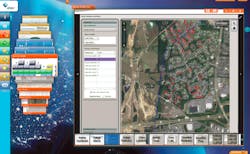The Smart Utility’s Guide to Choosing a Smart Meter
In recent years, our industry has been awash in innovative technologies and the promise of business transformation via smart grid solutions. Indeed, through Advanced Metering Infrastructure (AMI) we’re now capturing, managing and analyzing meter data that has the potential to empower utilities and your customers like never before. The possibilities are thrilling – and virtually limitless.
The challenge is to leverage these new technologies to answer specific business opportunities – to convert vast volumes of meter data into intelligence that triggers timely and informed decisions across the enterprise. This is a feat that ultimately requires fast, reliable, simple and non-resource intensive ways to route critical information to the people in support of the business processes that rely on it. And the people who rely on it include not just your personnel, but also your customers and government leaders.
To be sure, system interoperability is essential to achieving this objective, but to meet the increasing demands of the future, it isn’t enough. Utilities that will thrive into tomorrow will be those with business workflow solutions that not only share information among numerous systems spanning the enterprise, but also across departments and applications – thus unlocking the full value of their meter data and enabling their employees to operate more efficiently, productively and consistently.
Workflow in Action: Then and Now
It was not so long ago that utilities depended solely upon customer phone calls to know which areas of their distribution system were affected by a power outage. Estimating the size and impact of disturbances involved considerable guesswork based on input from these callers, and repair crews were dispatched based on this information. Power was restored as quickly as humanly possible, with an emphasis on humanly.
Just what will tomorrow’s advances look like? And what do utilities need to know and do in order to be prepared for – and capitalize on – tomorrow’s possibilities?
In the future, the meter data that currently fuels today’s distribution automation solutions will not only leverage modern– and increasingly powerful – analytics. It also will be integrated into applications impacting business operations across the utility and consumer landscape – from billing to customer service to outage and voltage management and more. To further derive value from the meter data being captured, these applications will be fully integrated with each other, enabling the development of customized, scripted workflow solutions that are accessible to everyone who needs them, everywhere in the organization.
So – returning to the example above – when tomorrow’s utility experiences a power outage, a scripted workflow will draw upon multiple, data-rich applications to enable even tablet-based workers in the field to instantly and easily:
- Identify the affected area
- Isolate the cause
- Locate the nearest available repair crew
- Dispatch this crew by the most direct route to make repairs
- Make the repairs
- Ping affected meters to confirm power restoration
- Update all relevant databases about the repairs that were made
BONUS VIDEO:The CallistoUX dynamic AMI User Interface
Similar efficiencies will be gained in other departments throughout the organization, as well. For instance, analytical capabilities in diverse applications can mine the collected data from many scenarios, such as those above, to give operational insights to managers on how efficiently the business is operating. Analytics could even make recommendations for improvement.
Workflows which ensure proper steps and consistent data capture can help make this a reality. Whether or not employees have ever dealt with a particular challenge in the past will be of limited consequence. In fact, they won’t even need to know where the data resides in order to leverage it, because future workflow solutions will have the embedded intelligence each worker requires. Users will merely define the problem that must be addressed. The workflow will then lead them through the steps to solve it, using powerful, integrated applications driven by critical AMI data. The result?- Reduced employee training time
- Higher productivity
- Increased consistency
- Improved reliability
- Superior customer satisfaction
All made possible by connecting meter data with business workflow processes.
A Workflow Solution that Works for Your Business
Clearly, a data-driven, application-integrated, business workflow solution can bring great rewards to utilities and the communities that they serve. However, to deliver maximum benefits with minimum disruption, specific features will be critical. That’s why it’s important to look for a workflow solution that:
- Works the way you do.
Too often, organizations must adapt to new technology that is intrusive to business processes and cumbersome for users. The value of a workflow tool lies in organizing and standardizing the performance of predictable tasks that span multiple applications. As such, mapping the work to existing processes rather than retrofitting processes to the work flow tool is a significant advantage. Your workflow solution shouldn’t force you to change the way you do business. It should improve operational efficiency and make your most important resource – your people – more capable, confident and productive.
- Turns every employee into a super-user.
The ideal workflow solution will draw upon best practices to build optimized and standardized workflows for business processes across the enterprise. Employees will then be guided through these workflows via the data-rich, integrated applications that comprise the workflow tool on their computer screen. This ensures consistency, improves productivity and reliability, and essentially turns every employee into a super-user – without the time and expense of intensive training.
- Makes integrated applications easily accessible.
Time was, "swivel-chair" integration was the standard in workflow, with employees moving from monitor to monitor and process to process to accomplish a task. Tomorrow will bring solutions that eliminate this inefficiency; solutions that give employees everywhere in the organization everything they need to accomplish their work quickly and easily from a single screen. Better yet, because the integration of applications that makes these solutions possible will often take place only at the "virtual" user experience level, it won’t take a complicated – and costly – IT project to implement one.
- Provides easily controlled and secure administrative oversight.
The most powerful tools for workflow automation will be of limited success without the proper administrative controls to effectively ensure consistency, ease of use and secure access. Designed and approved workflows need to be consistent across the organization while still leveraging the creative abilities of your workforce. The security of your enterprise and the distribution network serving your communities demands tight controls on who can effect changes. You have personnel from another territory or utility responding to help with a storm event? These should be authorized quickly to work within your system on approved workflows. Your employees collaborate to create an effective workflow for better managing customer billing inquiries? This should be approved and shared for reuse across the organization for users of interest. A mechanism for securely leveraging the talents of your workforce will ensure greater productivity, job satisfaction and an increased sense of "ownership.".
The continuing evolution of the smart grid will bring many exciting changes to our industry, some of which can’t even be envisioned today. What we can see now, however, is a way to transform day-to-day operations of utilities through the integration of meter data with workflow-driven business processes. There is no doubt we’ll be hearing much more about innovation in this area as more businesses begin to realize its benefits in the days to come.
Utilities Weigh In
When a flexible workflow tool was demonstrated to dozens of utility system operators, project managers and engineers in early 2013, they readily envisioned applications to make their own business processes easier and more efficient. Ideas included customer service, troubleshooting meters, testing and inventorying new meters, managing firmware versions by device, checking for outages, managing high bill complaints, system design, transformer sizing and load management and voltage issues reported by customers.
Consider an example from Zach Flanagan, Applications Developer, East Mississippi Electric Power Association:
Creating outage and damage assessments would benefit from a work stream process tool, mainly because you have users from a plethora of backgrounds who may not perform this specific task on a daily basis. The work stream would not only help those users along; it will mitigate/minimize the missing or incorrect data problems due to the user’s lack of knowledge. When you have large scale outages due to hurricanes, for example, everyone helps, which is when you have the most inexperienced users and—at the same time—you need the work to be most efficient."
-Zach Flanagan, Applications Developer, East Mississippi Electric Power Association
A Technology Provider’s Take
Leading grid optimization technology provider Dominion Voltage, Inc. (DVI) delivers advanced solutions for energy efficiency, demand response and volt-VAR control. When introduced to a flexible workflow tool, DVI Chief Technologist John Radgowski could readily envision ways in which the integration of voltage optimization – as provided by the company’s EDGE solution – could enhance utilities’ day-to-day operations.
When a severe storm is coming and outage alarms are sounding, the scripted workflow could include disengagement of conservation voltage regulation (CVR) to affected areas, then prompt workers to re-engage voltage optimization when service is restored," said Radgowski.
"The same holds true for switching or construction. If a utility needs to take a portion of a circuit down, the distribution management user could execute a workflow that includes a step to disengage CVR at the start, and another to reactivate it when the system is returned to its normal state."
-John Radgowski, Chief Technologist, DVI
About the Author
Michael Johnson serves as product manager for RF Mesh Data Collection Solutions for Elster Solutions. In this role, Michael works on software strategy development, requirements management and strategic enterprise partner activities. Prior to joining the Product Management team in this role, Michael served as a principal software engineer and architect in the Product Development and Integrated Solutions organizations for 11 years within Elster. He currently serves on a number of U.S. and international smart grid standards bodies including the IEC TC57 WG14 (CIM) and the Multispeak Technical Committee. Prior to joining Elster, Michael held software engineering positions within the defense and telecom industries, working on battlefield operational planning software and telecommunications infrastructure firmware. Michael has a B.S. in Computer Science from North Carolina State University.
About Elster Solutions
Elster Solutions is the North American electricity business unit of Elster, a multi-national, 7500-person company providing electricity, gas and water meters and related communications, network and software solutions to customers in more than 130 countries. Headquartered in Raleigh, NC, Elster Solutions is focused on delivering the vital connections utilities need to achieve the greatest possible value from their meter data.
From smart meters and other grid sensors, to advanced metering infrastructure (AMI), meter data management (MDM), network communications, data analytics and pre-integrated, partner-based solutions for sophisticated grid power management, Elster’s solutions unlock the data stored in electric, gas and water meters. By transforming meter data into meaningful grid performance information, Elster helps utilities and their customers improve system reliability, enhance operational efficiency, enhance customer service and reduce their carbon footprint.
Content brought to you by: Elster






